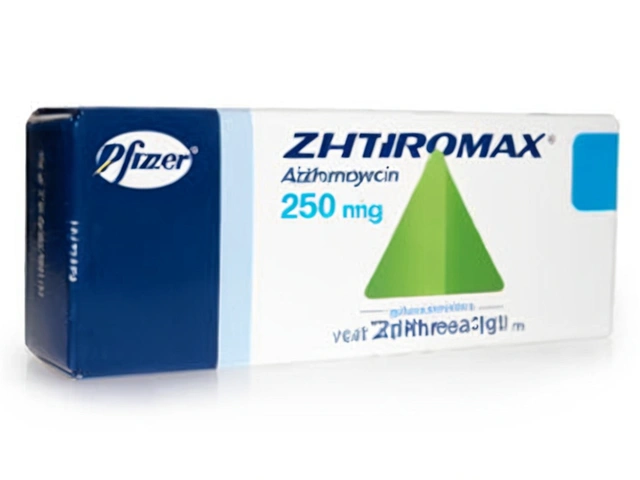Immunosuppressant Selection Guide
Select Your Transplant Type
Side Effect Concerns
Insurance Coverage
Patients and clinicians often wonder whether the brand‑name drug Prograf is the best tacrolimus option for preventing organ rejection or if a cheaper or differently‑profiled alternative might work just as well. This article breaks down the most common substitutes, weighs their effectiveness, side‑effects, and price, and gives you a practical decision guide.
Key Takeaways
- Prograf is a branded tacrolimus formulation with consistent blood‑level control but a higher price tag.
- Generic tacrolimus (e.g., Adoport, Lupkyn) offers similar efficacy at a fraction of the cost.
- Cyclosporine and sirolimus work through different pathways and may be chosen when tacrolimus‑related side‑effects are a concern.
- Mycophenolate mofetil is usually added as a complementary agent rather than a direct substitute.
- Choosing the right drug depends on indication, kidney function, drug interactions, and insurance coverage.
How Tacrolimus Works
Tacrolimus belongs to the calcineurin inhibitor class. By binding to the intracellular protein FKBP‑12, it blocks the activation of calcineurin, which stops T‑cell production of interleukin‑2. The result: a blunted immune response that reduces the risk of organ rejection after kidney, liver, heart, or lung transplants.
Because the therapeutic window is narrow, clinicians monitor blood trough levels (usually 5‑15ng/mL depending on the organ) and adjust doses accordingly.

Top Alternatives Overview
The most frequently mentioned alternatives fall into three groups: other tacrolimus products, drugs that hit the same calcineurin pathway, and agents that suppress immunity through a different mechanism.
| Drug (Brand) | Class | Typical Indication | Key Dosing Range | Common Side‑Effects | Average Monthly Cost (US$) |
|---|---|---|---|---|---|
| Prograf | Calcineurin inhibitor | Kidney, liver, heart, lung transplant | 0.1‑0.2mg/kg/day | Neurotoxicity, nephrotoxicity, diabetes | ≈$1,200 |
| Adoport (generic tacrolimus) | Calcineurin inhibitor | Same as Prograf | 0.1‑0.2mg/kg/day | Similar to Prograf | ≈$250 |
| Neoral (cyclosporine) | Calcineurin inhibitor | Kidney, liver, heart transplant | 3‑5mg/kg/day | Gum hyperplasia, tremor, hypertension | ≈$300 |
| Rapamune (sirolimus) | mTOR inhibitor | Kidney transplant, stent‑related | 2‑5mg/day | Hyperlipidemia, delayed wound healing | ≈$500 |
| CellCept (mycophenolate mofetil) | Antimetabolite | Often combined with tacrolimus or cyclosporine | 1‑1.5g twice daily | GI upset, leukopenia | ≈$200 |
Side‑Effect Profile Comparison
While all immunosuppressants aim to curb rejection, they each carry a unique safety fingerprint.
- Neurotoxicity (tremor, seizures) is most common with tacrolimus (Prograf, generic). Cyclosporine can also cause tremor but generally less severe.
- Nephrotoxicity occurs with both tacrolimus and cyclosporine; however, tacrolimus‑related kidney injury tends to appear at lower blood concentrations.
- Metabolic disturbances such as new‑onset diabetes are reported more often with tacrolimus than with cyclosporine or sirolimus.
- Hyperlipidemia is a hallmark of sirolimus, making it a less attractive primary agent for patients with uncontrolled cholesterol.
- Gum overgrowth is almost exclusive to cyclosporine and can be managed with good oral hygiene or dose reduction.
Because many transplant protocols use a combination (e.g., tacrolimus+mycophenolate), clinicians often balance the side‑effect load across drugs.
Cost and Accessibility
Price is a decisive factor for long‑term therapy. Brand‑name Prograf remains the most expensive single‑agent option, largely due to patent‑related pricing and limited generic competition in some regions. Generic tacrolimus (Adoport, Lupkyn) drops the monthly expense by~80% while maintaining bioequivalence, according to a 2023 comparative bioavailability study.
Cyclosporine’s older market status keeps its cost moderate, but dosing is weight‑based and often higher in milligram terms, which can offset the lower per‑milligram price. Sirolimus sits in the middle-more costly than generics but cheaper than Prograf.
Insurance formularies in North America typically place generic tacrolimus on the preferred tier, whereas Prograf may require prior authorization. For patients without coverage, many hospital pharmacies offer patient‑assistance programs for Prograf, but the paperwork can be cumbersome.
Choosing the Right Option: Decision Guide
Below is a quick decision tree you can follow with your healthcare provider.
- Identify the transplant type and any organ‑specific dosing recommendations.
- Check baseline labs (creatinine, lipids, glucose) to spot potential drug‑specific risks.
- If cost is a major concern and the patient tolerates tacrolimus well, start with a generic (Adoport) and monitor trough levels.
- If the patient experiences tacrolimus‑related neuro‑ or metabolic side‑effects, consider switching to cyclosporine or adding sirolimus at a reduced tacrolimus dose.
- When wound healing is critical (e.g., recent abdominal surgery), avoid sirolimus as a primary agent.
- For patients with severe hyperlipidemia, prefer tacrolimus or cyclosporine over sirolimus.
- Always pair a calcineurin inhibitor with an antimetabolite (mycophenolate) unless contraindicated, to lower rejection risk.
Open communication with the transplant team is essential-dose adjustments are frequent in the first six months post‑transplant.
Frequently Asked Questions
Is generic tacrolimus as effective as Prograf?
Yes. Multiple bioequivalence studies (e.g., 2023 European multicenter trial) showed that generic tacrolimus achieves the same trough concentrations and rejection rates as Prograf when dosed equivalently.
Can I switch from Prograf to cyclosporine without increasing rejection risk?
Switching is possible but requires careful monitoring. Because cyclosporine’s dosing is higher and its side‑effect profile differs, clinicians usually taper Prograf while gradually introducing cyclosporine, checking blood levels weekly for the first month.
Why does Prograf cause diabetes in some patients?
Tacrolimus impairs pancreatic β‑cell function and increases insulin resistance. The risk rises with higher trough levels (>10ng/mL) and in patients with a family history of diabetes.
Is sirolimus safe to use as a sole immunosuppressant?
Sirolimus alone is rarely used because it offers weaker early‑post‑transplant protection. It’s most effective when combined with a calcineurin inhibitor or an antimetabolite.
How do I know which drug my insurance will cover?
Check your pharmacy benefits manager’s formulary list. Most Canadian provincial plans place generic tacrolimus on the preferred tier, while Prograf often sits on a higher tier requiring a co‑pay or prior‑auth.
Ultimately, the best choice balances efficacy, side‑effect tolerance, and affordability. Talk with your transplant specialist about the pros and cons of each option before making a switch.
Prograf remains a reliable cornerstone in transplantation, but a range of alternatives exists to fit diverse clinical and financial needs.







